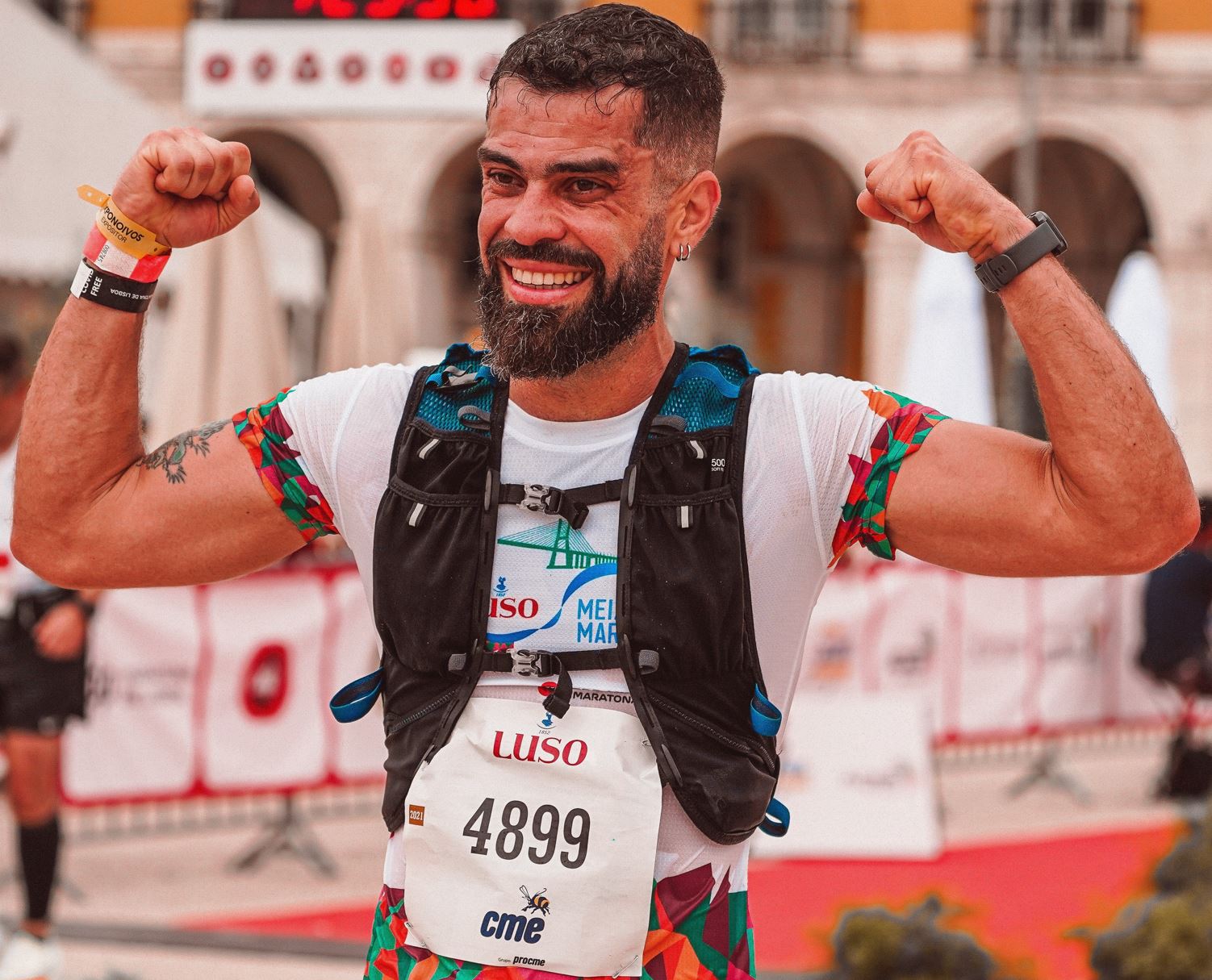Confidence is the Key to Endurance-sport Success
Have you ever entered a race not feeling very confident about your ability to achieve your race goals that day? We’ve all been there, to be sure. And what likely happened was that your race didn’t go the way you wanted, that is to say, you were slower than you had hoped to be or, even worse, you may not have made it to the finish at all. The reality of endurance sports is that if you don’t truly believe you can maintain a certain pace or go a particular distance, you won’t give your best effort because you assume you’ll blow up. That’s why, on race, confidence is your most important mental muscle.
What is Confidence?
I define confidence as how strongly you believe in your ability to perform your best and achieve your endurance-sports goals. Confidence is so important because you may be physically capable of racing at a certain pace, but if you don’t believe you have that ability, then you won’t attempt that pace.
Your goal is to develop what I call ‘prime confidence,’ a deep, lasting, and resilient belief in your endurance-sport ability. Prime confidence keeps you positive, motivated, intense, and focused when you need to be most. With prime confidence, you can stay confident even when you’re not at your best on race day. You aren’t negative and uncertain in difficult race conditions and you’re not overconfident in easy races. Prime confidence also encourages you to seek out challenging situations and to view difficult conditions and a tough course as challenges to pursue. Prime confidence enables you to perform at your highest level consistently.
Confidence is a Muscle
A misconception that many endurance athletes have is that confidence is something that is inborn or that if you don’t have it at an early age, you will never have confidence. To the contrary, though, confidence is a muscle, much like your glutes and quads, that can be strengthened.
To strengthen your confidence muscle, you must retrain the way you think. You must train your confidence muscle so that it becomes strong resulting in your natural reaction being to flex your confidence muscle and propel you forward in your races.
Confidence Challenge
It’s easy to stay confident when you’re having a great training or race day, when the conditions are ideal, and when you’re feeling rested. The real test of confidence, however, is how you respond when things aren’t going your way. I call this the ‘Confidence Challenge.’ What separates the best from the rest is that the best endurance athletes are able to maintain their confidence when they’re not at the top of their game. By staying confident, they continue to work hard rather than give up because they know that, in time, their ongoing efforts will be rewarded with fast times and great results.
Most endurance athletes who perform poorly get caught in a vicious cycle of low confidence and performance. Once you slip into that downward spiral, you rarely can get out of it in the short term. In contrast, endurance athletes with prime confidence maintain their confidence and seek out ways to return to their previous level. All endurance athletes will go through periods where they don’t perform well. The key is not getting caught in the vicious cycle, being able to get out of the down periods quickly, and return to a virtuous cycle of high confidence and performance.
There are several keys to mastering the Confidence Challenge.
- Develop the attitude that demanding situations are challenges to be sought out, not threats to avoid.
- Believe that experiencing challenges is a necessary and satisfying part of becoming the best endurance athlete you can be.
- Be well-prepared to meet the challenges.
- Stay positive and motivated in the face of the difficulties.
- Focus on what you need to do to overcome the challenges.
- Accept that you may experience failure when faced with new challenges.
- Most importantly, never, ever give up!
Why Endurance Athletes Lose Confidence
Anything that counters your belief in your ability to achieve your endurance-sport goals will hurt your confidence. The greatest disruption to confidence is failure. Failure can mean not being able to finish a workout, having a disappointing race, or being beaten by someone you really wanted to beat. Failure will cause you to lose faith in your ability and to become tentative or cautious. There is nothing more harmful to confidence than failure because it provides evidence that any confidence you may be unjustified.
Symptoms of Low Confidence
To help you further your understanding of your confidence, here are several symptoms of low confidence that are common among endurance athletes.
Self-doubt. Endurance athletes with low confidence just don’t believe in themselves. They express this self-doubt in negative self-talk or negative talk to others. Before a race, for example, these endurance athletes will be thinking things like, “I’m just not going to do well today.” Or “The conditions are just too rough for me.” Not surprisingly, this sort of talk becomes a self-fulfilling prophecy that sets endurance athletes up for failure.
Anxiety. Endurance athletes with low confidence may experience intense pre-competitive anxiety because they don’t believe they can perform well and achieve their race-day goals. As such, they are placing themselves in a situation that is incredibly threatening to them, namely, almost guaranteed failure (as they perceive it). This anxiety contributes to a vicious cycle in which the highly unpleasant physical symptoms of anxiety—muscle tension, choppy breath, racing heart, too much adrenaline—send the message to your mind that confirms the low confidence, triggers a flight reaction, and prevents anxious endurance athletes from focusing adequately on what they need to do to perform well. Additionally, these symptoms almost ensure performance failure because anxious endurance athletes’ bodies are simply not capable of performing at their best.
Insufficient effort. Low confidence has the expected effect of reducing endurance athletes’ motivation to put forth their best effort. From their perspective, what’s the point of trying hard when they know they will fail. This toxic stew of low confidence and motivation acts as an anchor on race day because, without sufficient belief in their ability to succeed and their lack of effort, these endurance athletes have zero chance of being successful.
Tentative performance. Endurance athletes with low confidence create a “perfect storm” of psychology and physiology that sets the stage for race performances that are cautious and tentative. These performances lack full psychological commitment because of the absence of both confidence and motivation. They are also missing intense physical effort and exertion because their bodies aren’t physiologically capable of performing their best. The result are performances that are uncertain and lacking in determination and energy.
Four Tools for Prime Confidence
The ultimate goal of prime confidence is to develop a strong and resilient belief in your endurance-sport ability so that you have the confidence to give your best effort, perform at your highest level, and believe you can achieve your goals in the most important races of your season. I have identified four tools that you can use to create a virtuous cycle that will lead to prime confidence. Each tool alone can enhance your confidence, but if you use all of them together, you’ll find your confidence growing significantly stronger and more quickly.
Preparation breeds confidence. Preparation is the foundation of confidence. This preparation includes the physical, technical, tactical, equipment, and mental parts of your endurance sport and means putting in the necessary time and effort into every aspect of your training. If you have developed these areas as fully as you can, you will have faith that you will be able to use those capabilities gained from preparation to give your best effort on race day. The more of these areas you fully address in your preparation, the more confidence you will breed in yourself. My goal for you is that, when you arrive at every race, you can say, “I’m as prepared as I can be to achieve my race goals.” And that statement alone exudes confidence.
Adversity ingrains confidence. Exposing yourself to adversity offers so many psychological and emotional benefits to endurance athletes. Confidence is one mental area in which adversity can be a powerful tool for its development.
To ingrain confidence more deeply, you should expose yourself to as much adversity as possible in training. Adversity can be environmental obstacles such as cold or rough water on an open-water swim, a strong headwind on a bike ride, a steep and uneven course on a trail run, or bad weather, such as rain, cold, or heat. Adversity can also involve workouts that are demanding and painful.
Training for adversity has several essential benefits. Adversity increases your belief that you can responds positively to difficult conditions on race day because you’ve shown yourself that you can in training. It shows you ways to adapt to the adversity so you can make those adjustments in races; for example, changing your breathing pattern in choppy water or shortening your stride on a long climb. Training for adversity also familiarizes you with difficult conditions, so when you get to a race with such demands, you’ll be confident enough to stay positive and motivated in the face of it. Plus, training for adversity just makes you feel tough!
Take risks (and succeed). Risk taking is essential for endurance-sport success. The ability to get out of your comfort zone and push the limits of your capabilities is a requirement for any endurance athlete who aspires to be their best. Risk taking is a valuable tool for stretching yourself beyond your self-imposed limitations and, in doing so, bolstering that virtuous cycle of confidence and performance.
Risk, by definition, involves pushing outside your comfort zone and performing on the edge of failure. After succeeding from a risk, you come to believe that you can do more than you thought you could and, by extension, your confidence in those newly expanded capabilities grows. There is also a strong emotional component as it produces a rush of fulfillment, pride, inspiration, and excitement from the accomplishment. You feel stronger mentally and are empowered to continue to take risks and succeed.
Success validates confidence. All the previous steps in building confidence will go for naught if you don’t then perform well in races and achieve your goals. Success demonstrates that your belief in your ability is well-founded. Success further strengthens your confidence, making it more resilient in the face of adversity and poor performances. Success also rewards your efforts to build confidence by creating feelings of fulfillment, pride, and inspiration, all of which encourage you to continue to work hard and develop your capabilities.
But when I talk about success, I don’t mean just competitive success, that is, the “big victory,” at least not right away. I often hear endurance athletes say things like, “I just need a good race to get my confidence back.” But I would suggest that the chances of a big victory are very low if you lack confidence. Your initial goal is to create little “victories” every day in training. After a workout, you should be able to say that you just “won” that day by doing what you needed to do, for example, work hard, improve your fitness, or keep at it even when it really hurts. With each small victory in training that you accumulate you gain incrementally more confidence until it is high enough so that you are ready for that big victory on race day.
Do you want to take the next step in training your mind to perform your best in training and on race day? Here are four options for you:
- Read my latest mental training book: Train Your Mind for Athletic Success: Mental Preparation to Achieve Your Sports Goals.
- Listen to my Train Your Mind for Athletic Success
- Take a look at myonline mental training courses.
- Schedule a 1:1 session with me.





